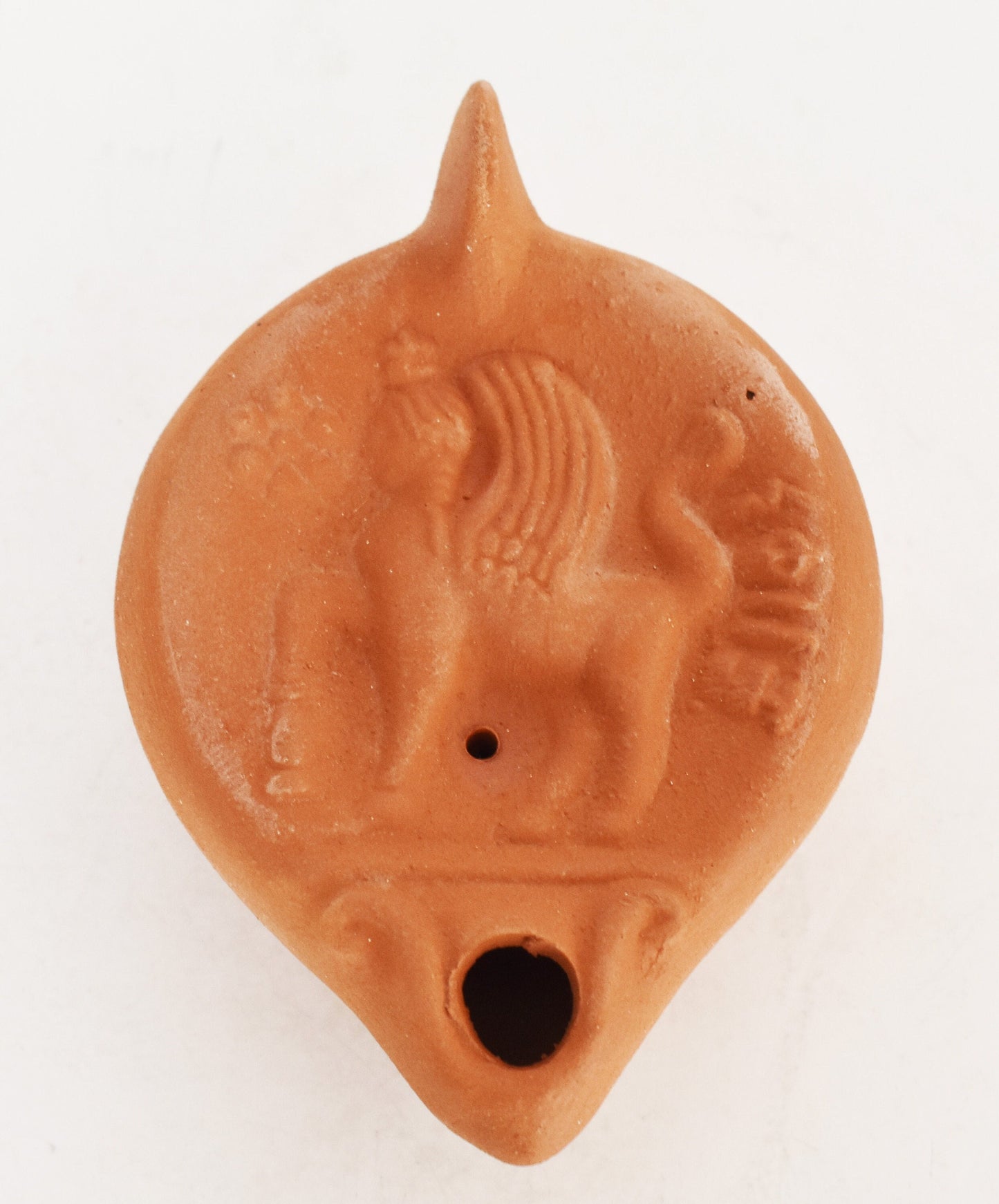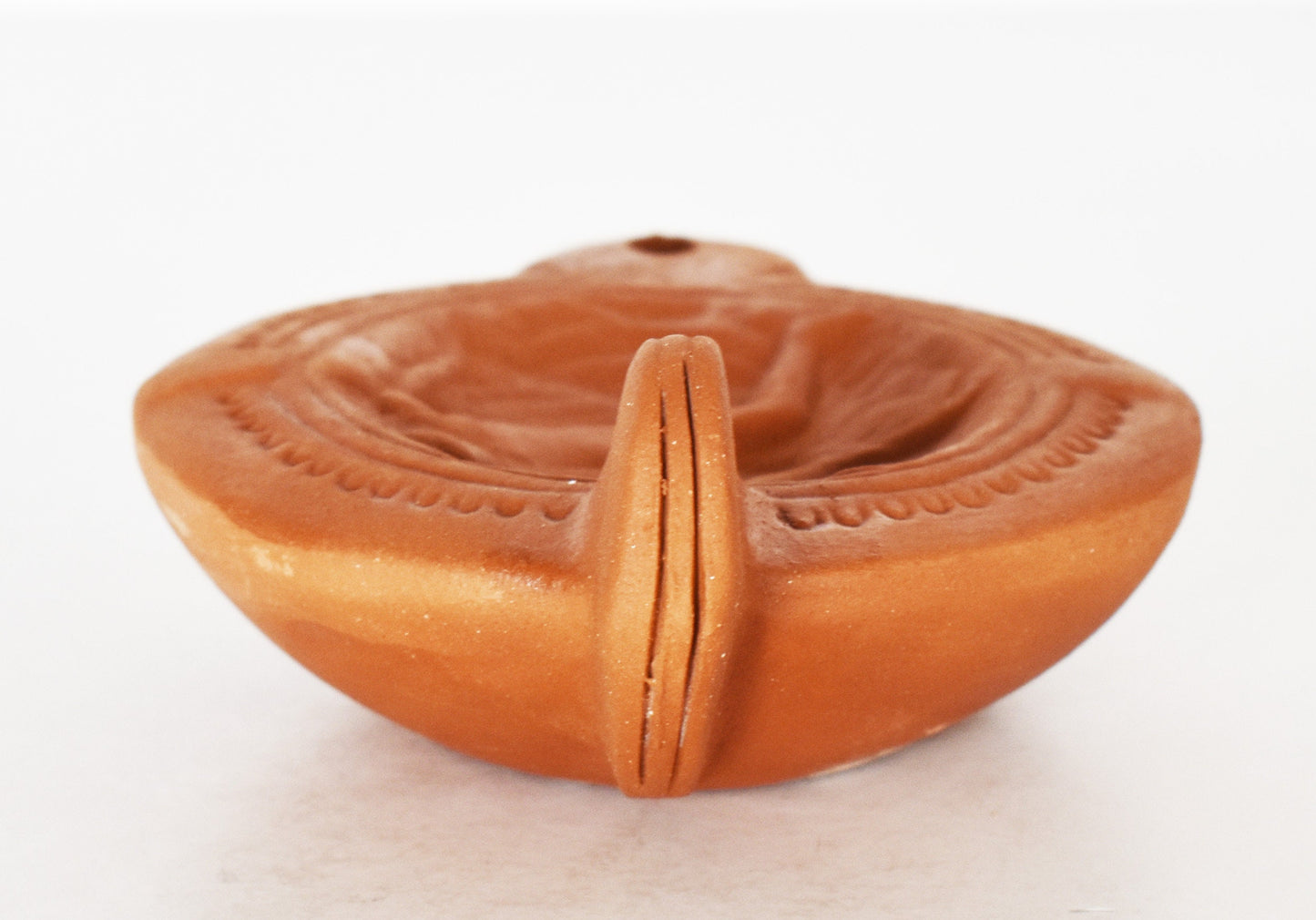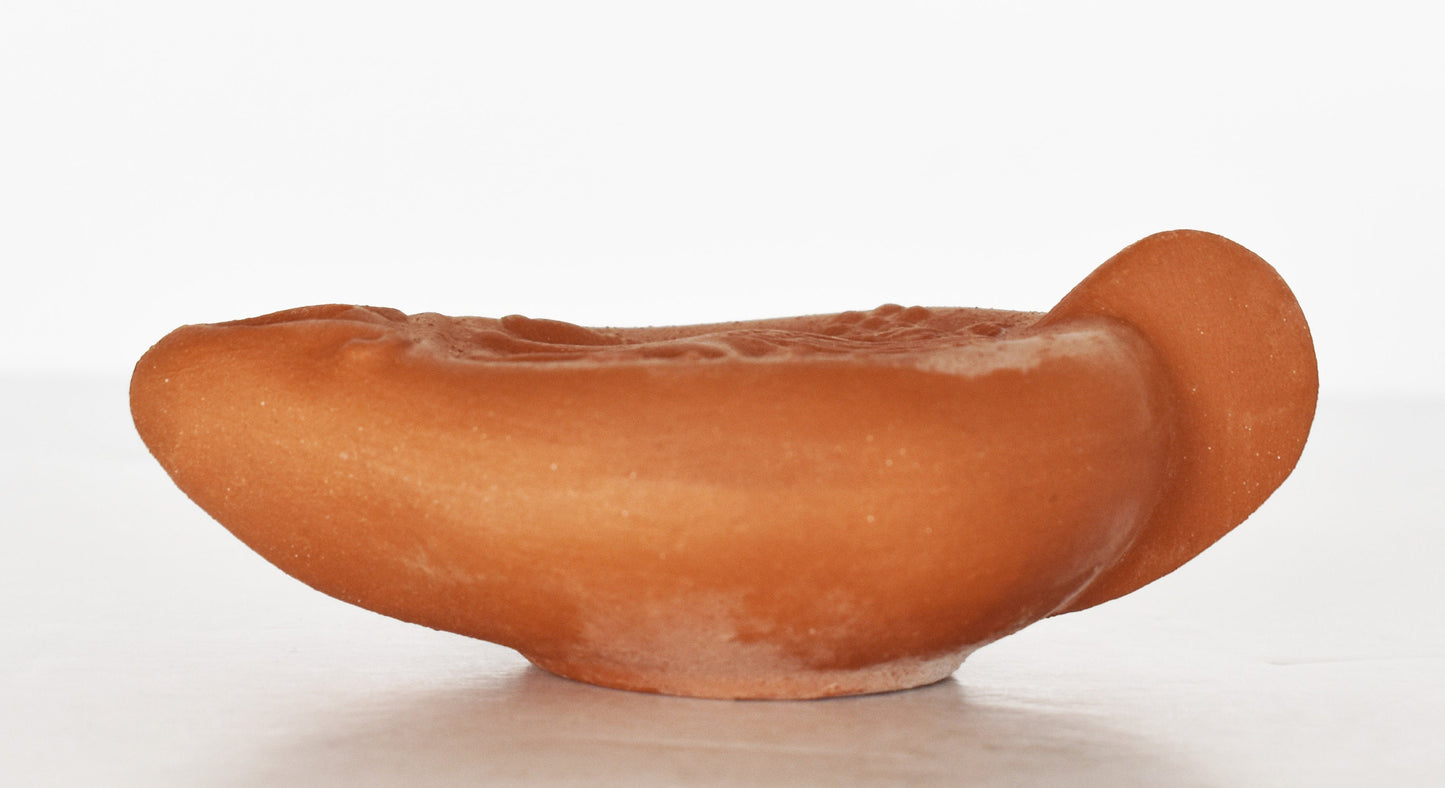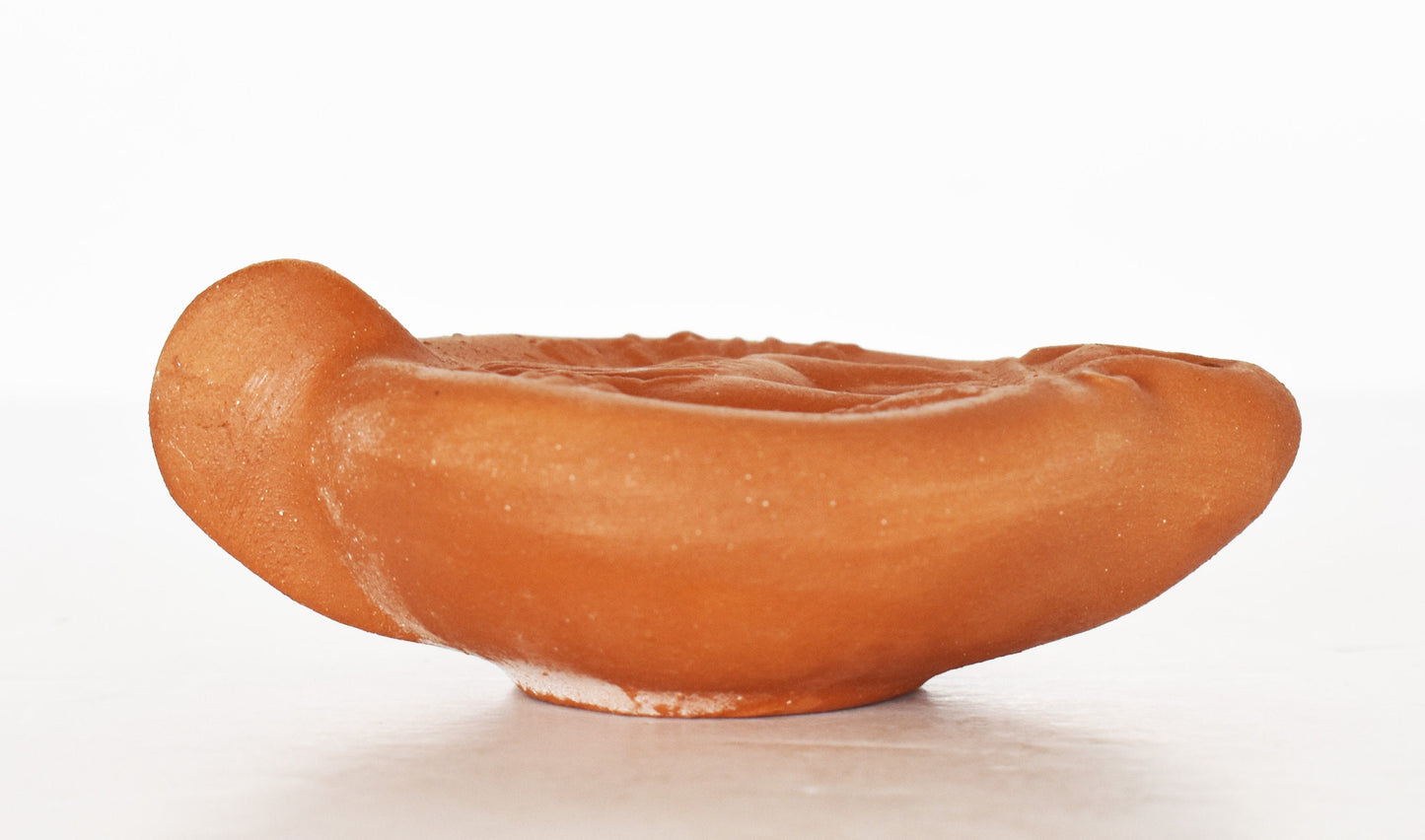Gallery Demeter
Oil Lamp - Athens, Attica - 600 BC - Sphinx - Guardian of Sacred Places - Symbol of Mystery - Museum Reproduction - Ceramic Artifact
Oil Lamp - Athens, Attica - 600 BC - Sphinx - Guardian of Sacred Places - Symbol of Mystery - Museum Reproduction - Ceramic Artifact
Couldn't load pickup availability
Details
Material:Ceramic
Condition: New, Handmade in Greece.
Height: 4 cm - 1,6 inches
Width: 10 cm - 3,9 inches
Length: 7 cm - 2,8 inches
Weight: 90 g
An oil lamp is an object used to produce light continuously for a period of time using an oil-based fuel source. The use of oil lamps began thousands of years ago and continues to this day, although their use is less common in modern times.
In Greek mythology, the sphinx was considered to be a woman. One sphinx was only considered to exist in Greek mythology; she was the daughter of Orthus, and either Echidna or Chimera. Apart from the human head and the body of the lion, she also had the wings of an eagle and the tail of a serpent. According to the myth, she dwelt outside the city of Thebes, and asked a riddle to all travellers, in order to let them pass. The riddle she asked is a famous one; which is the creature that has one voice, but has four feet in the morning, two feet in the afternoon, and three feet at night? Anyone who struggled to answer was eaten by the monster. However, Oedipus managed to answer correctly; he replied "the man", who crawls on all fours as a baby, walks on two as an adult, and needs a walking cane when old.
It seems that there was a second riddle following the first; "there are two sisters; one gives birth the the other, who in turn gives birth to the first. Who are they?" The correct answer is "day and night", two words that are both feminine in the Greek language. After Oedipus correctly answered both questions, the Sphinx killed herself, either by throwing herself off the rock on which she rested, or by devouring herself. This seems to be the literary way in which the ancient Greeks transitioned from the old religious practices, represented by the Sphinx, to the new ones and the establishment of the Olympian deities, represented by Oedipus.
MΠΑΜΙΑ 32 ΛΥΧΝΑΡΙ ΣΦΙΓΓΑ - 6









